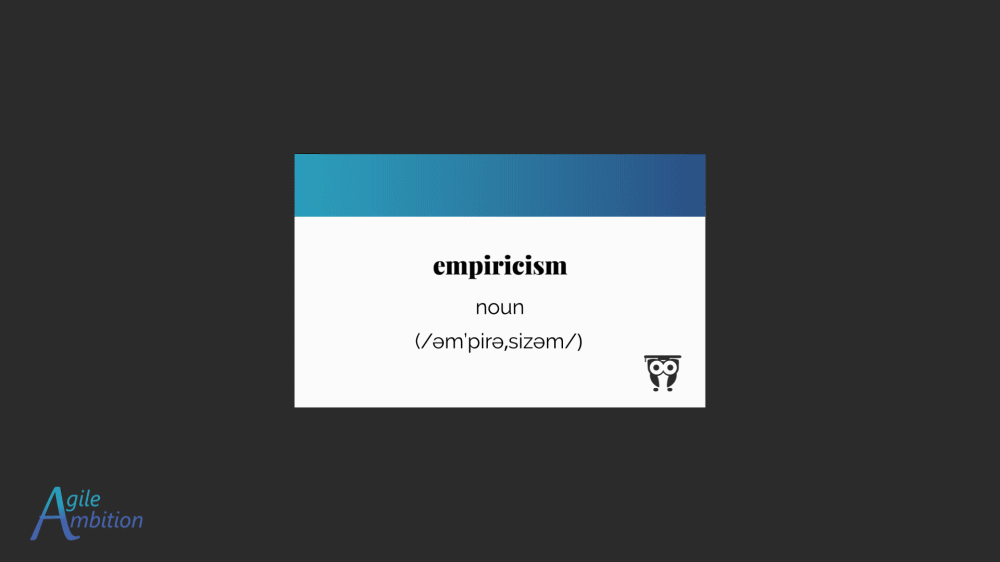Scrum Values: The Foundation of Trust

Is your team divided or lacking collaboration? Odds are a lack of trust is at the root of this dysfunction.
Why Is It Important To Trust the Team in Agile
Trust within Agile teams is crucial as it fosters collaboration, promotes innovation, and enhances productivity. However, building and maintaining trust requires ongoing effort and alignment among team members, impacting overall team dynamics and outcomes.
Establishing trust facilitates open communication and empowers individuals to take risks and contribute effectively to the team’s success.
How do we Establish Trust?
In his book, The Five Dysfunctions of a Team: A Leadership Fable, Patrick Lencioni proposes that the five primary dysfunctions of a team are all interrelated, each one feeding into the next.
I wasn’t surprised to discover the lack of trust as the foundation of this model. Identifying the absence of trust as the core issue is one thing, but finding solutions to address this dysfunction is another challenge altogether.
According to the Scrum Guide, the empirical Scrum pillars grant us the ability to build trust.
“When these values are embodied by the Scrum Team and the people they work with, the empirical Scrum pillars of transparency, inspection, and adaptation come to life building trust.”
–Scrum Guide
Why are Transparency, Inspection, and Adaption so important?
Transparency
Imagine you are in the shower and crack open one eye to find a shadow creeping toward you. Anyone who’s watched Psycho will know you have a scant few seconds to decide if you’re in danger and develop a suitable action plan.

In this scenario, which type of shower door would you prefer? The frosted glass door that obscures what’s happening in the room beyond, or the transparent glass door that provides a clear view of the situation outside?
“Transparency enables inspection. Inspection without transparency is misleading and wasteful.”
–Scrum Guide
Transparency provides us with the necessary information to make informed decisions. Transparency might prevent me from mistakenly confronting someone I suspect to be Norman Bates when, in reality, it’s just my husband bringing me a clean towel.
Transparency has a similar benefit for development teams. We can see the situation for what it truly is and make better decisions regarding people, processes, and tools.
Inspection
Let’s imagine I have a weight loss objective. Initially, I might decide to change my approach by beginning to monitor my calorie intake. When I mention this, many of you probably assumed that by “counting calories,” I meant establishing a specific limit and monitoring my daily intake against that limit.

However, what I specifically mentioned was calorie counting. If all I did was monitor a number without altering my eating habits, it’s improbable that the scale would show much change. Engaging in the mindless tracking of data without implementing changes is precisely why, upon hearing “counting calories,” we generally expect the calorie counter to accompany this with restricting calorie intake.
“Inspection enables adaptation. Inspection without adaptation is considered pointless.”
–Scrum Guide
Information alone will not lead to change. We must also pair that inspection with adaptation.
Adaption
Adaptation is the key factor that enables us to remain on the right path.
“A Scrum Team is expected to adapt the moment it learns anything new through inspection.”
–Scrum Guide
I have many fond childhood memories of family vacations. There’s one year in particular when my brother took on the responsibility of handling the map and guiding my dad with driving directions that stands out in my mind.
Despite my brother’s advice, Dad, convinced he knew the correct route, took a wrong turn and drove 200 miles in the wrong direction. Eventually, he conceded and stopped at a gas station to ask for directions. If he’d acted when my brother first indicated we’d made a wrong turn, it would have saved us considerable time and money.
With our powers combined: Empiricism!
We commonly refer to transparency, inspection, and adaption as the three pillars of empiricism.

Empiricism is a manner of working that values experience and bases decisions on factual evidence.
The results of transparency, inspection, and adaption are that you unlock a logical way of working, allowing you to improve continuously. When you’re transparent about what you’re doing, making decisions based on metrics, and improving, how could anyone do anything other than trust you?
“When people see you as a learning, growing, renewing person — or your organization as a learning, growing, renewing organization — they develop confidence in your ability to succeed in a rapidly changing environment, enabling you to build high-trust relationships and move with incredible speed.”
-Stephen M. R. Covey, The Speed of Trust
How can we Unlock Empiricism?
You might recognize working empirically as a growth opportunity for your team. Perhaps you’re already using the Scrum framework but haven’t fully grasped the potential value of empiricism. Where should you begin?
According to the Scrum Guide, the Scrum values are the key to transparency, inspection, and adaptation. That is a suitable starting point.
Focus
Every timebox in scrum is like a small science experiment. Maintaining transparency, inspection, and adaption takes vigilance.
“Their primary focus is on the work of the Sprint to make the best possible progress toward these goals.”
–Scrum Guide
Without focus, our ability to learn and improve is hampered when we allow ourselves to be distracted from the Sprint Goal. No one knows when the mold started growing on the bread because we were all off watching Netflix.
Openness
“The Scrum Team and its stakeholders are open about the work and the challenges.”
-The Scrum Guide
With openness, being transparent is easier. Withholding information from the team, whether out of fear or to further a personal agenda, will undermine the development team’s ability to make decisions. Without transparency, we’re at higher risk of making poor decisions.
Discover Better Ways of Working
Respect
When you trust that everyone on your team has the best intentions, it becomes easier to have the courage to be open about situations.
“Scrum Team members respect each other to be capable, independent people, and are respected as such by the people with whom they work.”
–Scrum Guide
When respect is present, the political charge will begin to dissipate. People don’t feel like they’re walking on eggshells. Team members are freer to be open about their thoughts and ideas without fear of repercussions.
Courage
Sometimes, it takes courage to point out the elephant in the room, especially when other team members are so used to said elephant that they’ve started using it as a coat rack.
“The Scrum Team members have the courage to do the right thing, to work on tough problems.”
–Scrum Guide
Lacking the courage to engage in challenging discussions restricts transparency, constraining our ability to adapt. Adaptation equally hinges on the courage to explore new endeavors. We shouldn’t let the fear of failure become so overwhelming that it hampers our capacity for remarkable achievements.
“Move out of your comfort zone. You can only grow if you are willing to feel awkward and uncomfortable when you try something new ”
–Brian Tracy
Understanding the significance of courage within your role is pivotal. Delving into practical examples of courage illuminates how seemingly ordinary actions can make an extraordinary impact.
Commitment
Continuous improvement is a journey, not a destination.
You need commitment to a training schedule to get better at running. To get better at cooking, you need dedication to learning new skills.
“The Scrum Team commits to achieving its goals and to supporting each other.”
–Scrum Guide
Maintaining transparency takes effort; it’s not a one-time switch you can flip.
Putting it all together
The scrum values enable transparency. Transparency enables inspection. Inspection enables adaption. Empiricism enables trust. Trust is the foundation to solve a team’s other four common dysfunctions.
However, this relationship isn’t unidirectional. It’s not solely the Scrum values that influence trust; trust equally affects the Scrum values.
Which Scrum Value Is Affected by Lack of Trust
Lack of trust profoundly affects all Scrum values. Trust issues can erode Focus, Openness, Respect, Courage, and Commitment within the team. However, it’s a common misconception that only “Commitment” is affected.
A deficit of trust within a Scrum team can significantly disrupt focus. It leads to increased distractions, hesitation in decision-making, reduced collaboration, and heightened stress. This lack of trust results in team members spending more time second-guessing, being micromanaged, and feeling uncertain, ultimately impeding their ability to concentrate on tasks and goals effectively.
A lack of trust profoundly affects openness within a Scrum team. It creates an environment where team members are hesitant to share ideas, express concerns, or communicate openly. When trust is absent, individuals are less likely to disclose challenges or seek help, hindering the free flow of information and transparency crucial for successful collaboration. This lack of trust stifles the culture of openness, leading to communication barriers and inhibiting the team’s ability to address issues openly and effectively.
When trust is lacking, team members may question each other’s capabilities and intentions, leading to a lack of appreciation for diverse perspectives and skills. This erosion of trust can result in dismissive attitudes, reluctance to value contributions, and a breakdown in mutual respect among team members. Ultimately, the absence of trust impedes fostering a respectful environment necessary for effective collaboration and teamwork within the Scrum framework.
Without trust, team members may hesitate to take risks, ask questions, or make bold decisions, fearing criticism or reprisal from colleagues or leadership. This lack of trust undermines the courage needed to experiment, innovate, or propose new ideas within the team. It creates an atmosphere where individuals feel less empowered to step out of their comfort zone, stifling the courage to embrace change and push boundaries to pursue better solutions within the Scrum framework.
The absence of trust significantly affects commitment within a Scrum team. When trust is lacking, team members may hesitate to commit to tasks, goals, or decisions fully. This lack of trust can lead to uncertainty about others’ reliability and intentions, reducing dedication and accountability towards shared objectives. The erosion of trust undermines a self-organizing team’s ability to make firm commitments, hindering progress and impacting overall productivity within the Scrum framework.
Works Consulted
TLDR
If your team lacks collaboration, it’s a sign that they lack trust. Allowing the Scrum values to guide your actions is one way to ease the transition to a genuinely empirical process. As individuals and teams exemplify those values, others will notice the improvement. Over time, the team will repair foundational trust, and collaboration will occur more naturally.
Share
Table Of Contents
Fuel an Idea
Every week, I break down complex ideas, strip away the fluff, and give you experiments to turn knowledge into skills.
If that’s worth a coffee, consider fueling the next big insight.
No pressure. No guilt trips. Just impact.
Buy Me a CoffeeRelated Posts
Quick Links
Legal Stuff

